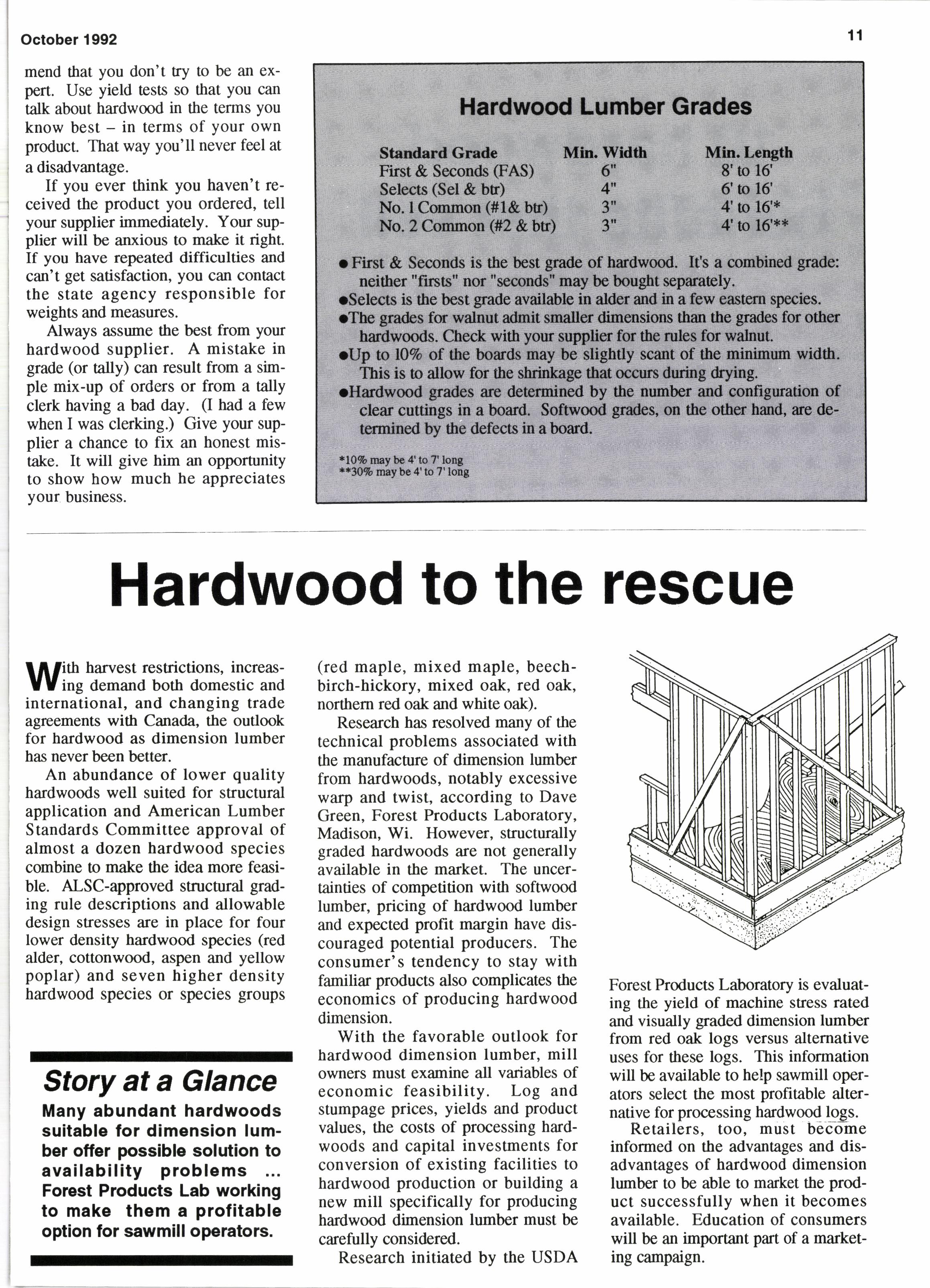
1 minute read
Hardwood to the rescue
lltith harvest restrictions, increasU U ing demand both domestic and international, and changing trade agreements with Canada, the outlook for hardwood as dimension lumber has never been better.
An abundance of lower quality hardwoods well suited for structural application and American Lumber standards committee approval of almost a dozen hardwood species combine to make the idea more feasible. AlSC-approved structural grading rule descriptions and allowable design stresses are in place for four lower density hardwood species (red alder, cottonwood, aspen and yellow poplar) and seven higher density hardwood species or species groups
Story at a Glance
Many abundant hardwoods suitable for dimension lumber offer possible solution to availability problems
Forest Products Lab working to make them a profitable option for sawmill operators.
(red maple, mixed maple, beechbirch-hickory, mixed oak, red oak, northem red oak and white oak).
Research has resolved many of the technical problems associated with the manufacture of dimension lumber from hardwoods, notably excessive warp and twist, according to Dave Green, Forest Products Laboratory, Madison, Wi. However, structumlly graded hardwoods are not generally available in the market. The uncertainties of cornpetition with softwood lumber, pricing of hardwood lumber and expected profit margin have discouraged potential producers. The consumer's tendency to stay with familiar products also complicates the economics of producing hardwood dimension.
With the favorable outlook for hardwood dimension lumber, mill owners must examine all variables of economic feasibility. Log and stumpage prices, yields and product values, the costs of processing hardwoods and capital investments for conversion of existing facilities to hardwood production or building a new mill specifically for producing hardwood dimension lumber must be carefully considered.
Research initiated bv the USDA
Forest Products Laboratory is evaluating the yield of machine stress rated and visually graded dimension lumber from red oak logs versus alternative uses for these logs. This infonnation will be available to help sawmill operators select the most profitable alternative for processing hardwood logs.
Retailers, too, must bec-ome infonned on the advantages and disadvantages of hardwood dimension lumber to be able to market the product successfully when it becomes available. Education of consumers will be an imporrant part of a marketing campaign.










